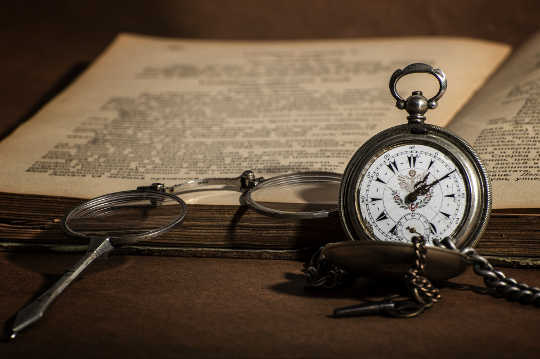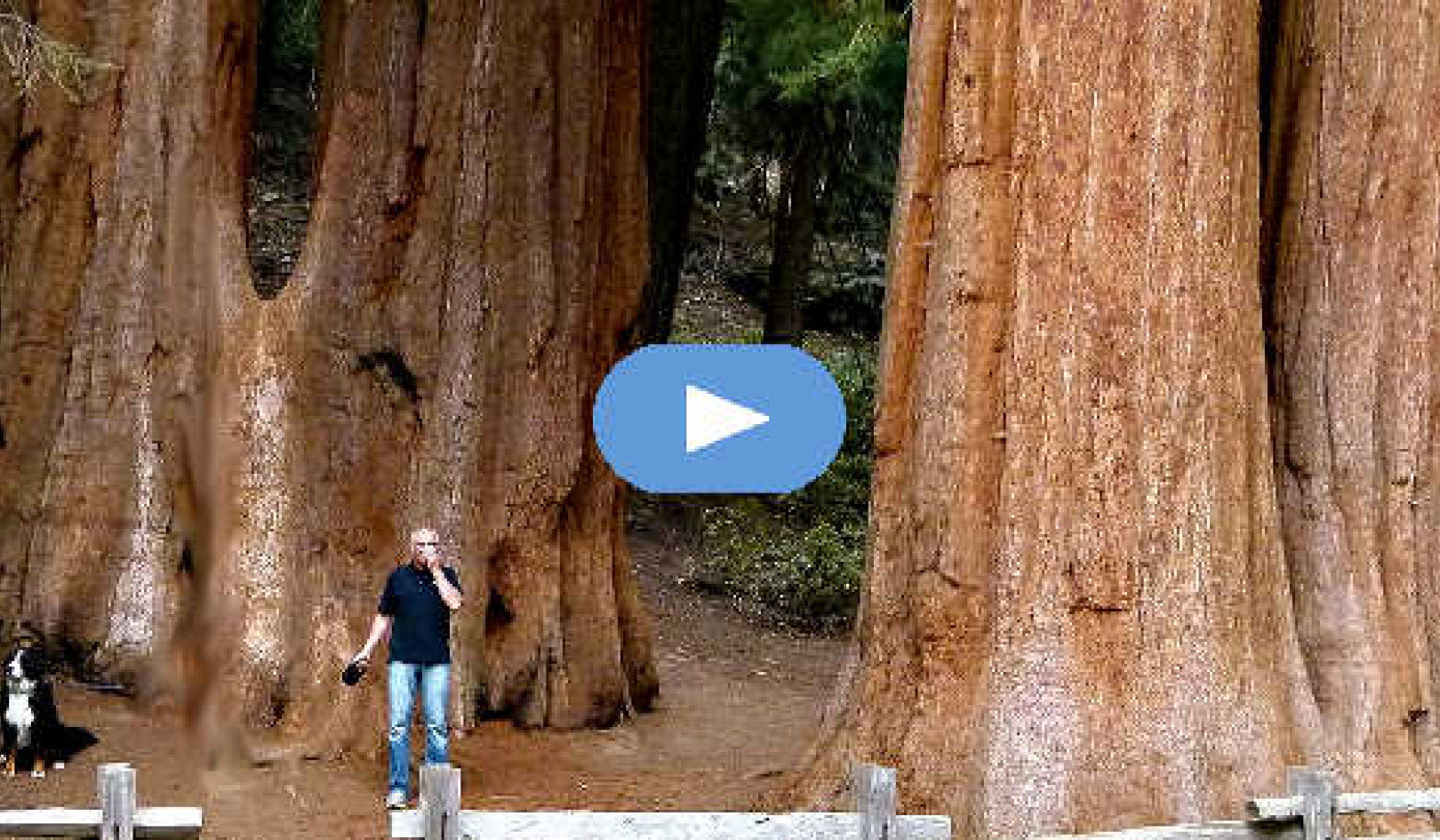
Image by Georgi Dyulgerov
I grew up in a blue-collar neighborhood on the south side of Chicago. I would often walk through the alleyways, accosted by the fumes of the maggot-infested garbage cans and think—What am I doing here? Where are my gardens?
I had nothing in common with my family, let alone with my neighbors and classmates. I always felt alienated there, as if I were in a prison biding my time until my great escape. It never felt like home. But where was home?
A number of clues were apparent from childhood, but I didn’t understand them until much later in life. For one thing, when I was in second grade, I signed up to take classical piano lessons. My parents thought it was just a passing fancy and refused my request, saying that if I was still interested by the time I got to third grade, they’d agree. I was—and they did. Listening to sonatas coming from our open windows instead of contemporary standards must have seemed strange to my neighbors as they sat on their front stoops on a warm summer evening.
But it wasn’t just Beethoven, Bach and Mozart that my eight-year-old self was yearning to play. Every Halloween I asked my mother to put my hair in ringlets so I could wear a ball gown as my costume. When I was older, I started writing with a quill or feather pen that I dipped in an ink jar, and I searched the stationery stores for parchment paper to write on. Movies that were about the eighteenth century were mesmerizing to me. Later I bought recordings of baroque music played on the harpsichord.
Most of all, I could not get enough of my history classes, especially if they were eighteenth century American history. I would go to the library and take out books about Dolly Madison and Abigail Adams, both heroines to me. This went on through college. I would spend hours researching lesser-known eighteenth century men and women for my essay assignments. Nothing gave me more joy than having piles of history books surrounding me as I scoured each one for a tidbit of information that most students would have ignored.
When I took a history exam, most of which were essay questions, my hand would race across the paper. I’d often not know the answer in my conscious mind, but somehow my subconscious took over and this wealth of information would pour out of me. This ability was not lost on one of my history professors who called me into his office to tell me that he thought I had the “most uncanny” feel for the eighteenth century of any student he had ever had. It wasn’t until years later that I understood that I was writing from memory, and not from what I learned in a lecture hall or in a book.
A Memory Trigger In Action
My penchant for anything eighteenth century is a classic example of a memory trigger in action. It was given to me before coming into this life, as a clue to my past-life identity—the past life that I would be working on in the coming life. It would enable me to remember the places and people I knew in that lifetime and give me a roadmap so I could, indeed, find my way back home.
That sense of coming home did not happen until after college when I decided to visit the historical spots along the eastern seaboard to find out what this “uncanny feel” was all about. I started in Virginia and worked my way up to Massachusetts. I was certain my interest in John and Abigail Adams would culminate in some sort of an “aha” moment once I visited their home in Quincy. But that’s not what happened at all. That “aha” moment happened in Virginia. When I visited spots in Charlottesville, Williamsburg, and Yorktown, I could feel my soul give a collective sigh of relief—a feeling of, finally I’m home.
The places I visited in Virginia elicited both an emotional and, in some cases, a physical reaction within me that were as real as they were indescribable. I wrote about it in my journal, came home, got married, raised a family and for all intents and purposes basically forgot about it until twenty-five-years later when I watched Out on a Limb. Suddenly, all those memories came flooding back and thereafter, I began my journey into understanding my past-life journey and helping others understand theirs as well.
Déjà Vu Experiences: A Roadmap in Life
My trip to Virginia kick-started a wave of déjà vu experiences that has served as my roadmap in this life. The term déjà vu comes from the French meaning already seen. It is most often defined as the illusion of having already experienced the situation one is in for the first time.
It also goes by the name “paramnesia” from the Greek, meaning alongside memory. That term, when used in psychiatry, is defined as a distortion of memory in which fact and fantasy are confused. But make no mistake about it. There is a clear and deep knowing that what you are experiencing is no figment of your imagination. It occurs when you least expect it, so there’s no time for preparation or processing.
You may be drawn to vacation in a place you haven’t been to before in this life, but once you are there and you walk across the Earth’s ley lines, where you deposited energy from another life, a signal is sparked deep within your consciousness, suspending you in time and for a brief moment, you have an inexplicable sensation that you’ve been there before. Something feels familiar, but you can’t put your finger on it. Or you get a flash when you meet someone for the first time that registers as—I know who you are.
Karmic Memory
There are all sorts of scientific explanations for déjà vu; from saying it is caused by the memory of a precognitive dream, or a momentary tapping into the Akashic records. I prefer to think of it as karmic memory.
Thinking about karmic memory is comforting—at least to me. Really. Stop and think about it. So many people question the reality of reincarnation because they are unable to remember their past lives. But is that true?
Karmic memories are embedded in our souls. They’re there. They’ve always been there. All we need is a little push to remember; some trigger in our daily life experience that will bring it to the surface and serve as an important clue, not only to our past-life identity, but ultimately to what we are working on in this life.
Triggers often materialize as flashes and they occur when and where you least expect. Edgar Cayce advised we heed these impressions, calling them flashes of past-life experiences that are influencing us now. They are very real.
©2020 by Joanne DiMaggio. All Rights Reserved.
Excerpted with permission of the publisher,
Balboa Press, a divn. of Hay House.
Article Source
I Did It To Myself...Again! New Life-Between-Lives Case Studies Show How Your Soul's Contract is Guiding Your Life
by Joanne DiMaggio.
 What does it feel like to die? What does the afterlife look like? Who are the Council of Elders and how do they assist in planning your next life? Who are members of your soul family and what role did they play in your past lives as well as in your current life? What are the karmic issues and attributes you brought into this life? Using past-life regression to identify a significant former life, followed by an exploration of the afterlife to experience the pre-life planning session for this life, this book answers the most commonly asked questions about death and rebirth. Follow the karmic journey of 25 volunteers as they come to understand their soul’s purpose and their role in designing their present life. In thinking about your life, you will discover that you did, indeed, do it to yourself for the greatest reason of all—your soul’s growth.
What does it feel like to die? What does the afterlife look like? Who are the Council of Elders and how do they assist in planning your next life? Who are members of your soul family and what role did they play in your past lives as well as in your current life? What are the karmic issues and attributes you brought into this life? Using past-life regression to identify a significant former life, followed by an exploration of the afterlife to experience the pre-life planning session for this life, this book answers the most commonly asked questions about death and rebirth. Follow the karmic journey of 25 volunteers as they come to understand their soul’s purpose and their role in designing their present life. In thinking about your life, you will discover that you did, indeed, do it to yourself for the greatest reason of all—your soul’s growth.
For more info, or to order this book, click here. (Also available as a Kindle edition.)
About the Author
 Joanne DiMaggio had a long career in marketing and public relations before pursuing a very successful freelance writing career. She has had hundreds of feature articles published in national and local newspapers, magazines, and websites. In 1987 she became actively involved with Edgar Cayce's Association for Research and Enlightenment (A.R.E.). She moved to Charlottesville, Virginia in 1995 and became Coordinator for the A.R.E. Charlottesville area in 2008. She earned her Masters in Transpersonal Studies degree through Atlantic University (AU). Her thesis was on inspirational writing and served as the basis of her book, "Soul Writing: Conversing With Your Higher Self." She leads workshops on the subject of soul writing to audiences across the country; has taught the process in a month-long online course through AU; and has been a guest on numerous radio programs. Using soul writing, she produced a small line of greeting cards called Spirit Song.
Joanne DiMaggio had a long career in marketing and public relations before pursuing a very successful freelance writing career. She has had hundreds of feature articles published in national and local newspapers, magazines, and websites. In 1987 she became actively involved with Edgar Cayce's Association for Research and Enlightenment (A.R.E.). She moved to Charlottesville, Virginia in 1995 and became Coordinator for the A.R.E. Charlottesville area in 2008. She earned her Masters in Transpersonal Studies degree through Atlantic University (AU). Her thesis was on inspirational writing and served as the basis of her book, "Soul Writing: Conversing With Your Higher Self." She leads workshops on the subject of soul writing to audiences across the country; has taught the process in a month-long online course through AU; and has been a guest on numerous radio programs. Using soul writing, she produced a small line of greeting cards called Spirit Song.





























